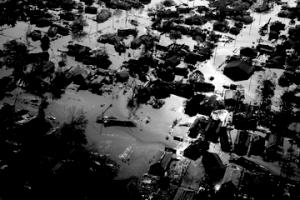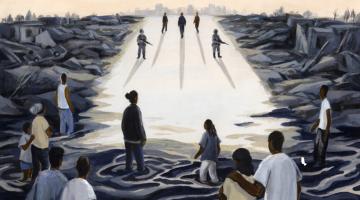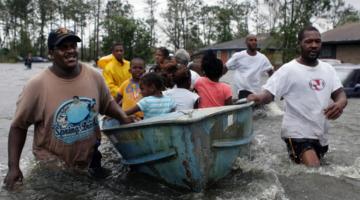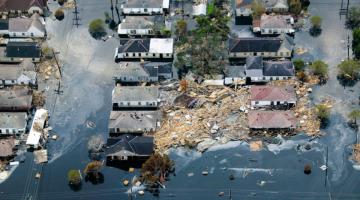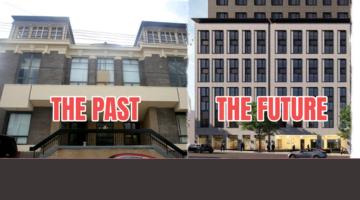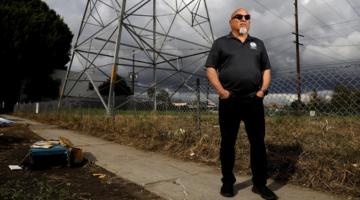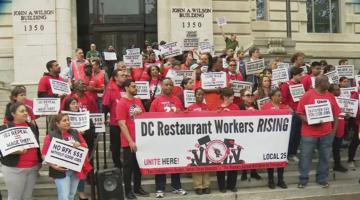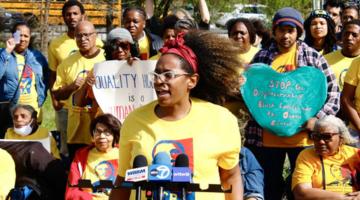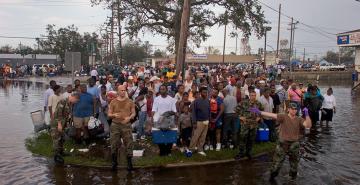A forgotten history of cross-racial labor solidarity in 1890s New Orleans offered a glimpse of a potential future. Its deliberate destruction set the stage for the city's modern transformation into a model of gentrification and Black displacement.
On October 24, 1892, nearly 3,000 New Orleans Teamsters, Scalesmen and Packers—known as the Triple Alliance or Triple A—walked off their jobs on the levees to demand overtime pay, a 10-hour-workday, and a closed shop.
Representing merchants, railroad owners, and commodities exchanges, the Board of Trade announced that it would sign an agreement with the unions representing the white Scalesmen and Packers’ unions but under no circumstance would it enter into an agreement with “niggers,” as they referred to the Black Teamsters.
The New Orleans Times-Democrat did its part to put its thumb on the scales by fabricating front-page stories with hysterical headlines such as “Negroes Attack White Man,” and “Assaulted by Negroes,” but nothing took. The Times-Democrat doubled down, writing of the strike in an editorial:
“The very worst feature, indeed, in the whole case seems to be that the white elements of the labor organizations appear to be under the dominance of Senegambian influence, or that they are at least lending themselves as willing tools to carry out Senegambian schemes.”
At issue for New Orleans’ employers were the German, Irish and Italian immigrants who had only recently arrived in the country and had not yet grown accustomed to thinking of themselves as “white.” The Times-Democrat’s racist dog whistles fell on deaf ears and when the Board of Trade would not budge on meeting the demands of their Black coworkers, nearly 50 union locals—including streetcar drivers and the typographers who had only recently signed new contracts—went on strike on November 8 in support of the stevedores. The general, or sympathy strike, shut the city down. One strike leader wrote to Samuel Gompers, head of the American Federation of Labor, which had emerged as the nation’s largest alliance of unions in the Jim Crow era.
“There are fully 25,000 men idle. There is no newspaper to be printed, no gas or electric light in the city, no wagons, no carpenters, painters or in fact any business doing ... I am sorry you are not down here to take a hand in it. It is a strike that will go down in history.”
It very well may have been in a republic not governed by the divide-and-conquer strategies required to sustain a white settler outpost whose survival depends on a fragmented working class. Still, it is useful to know that 113 years before Hurricane Katrina wrecked the Big Easy and made it synonymous with the Big Lie of white supremacy, New Orleans was actually a model of racial solidarity and underscored the nation’s democratic–and economic– potential.
With the exception of the closed union shop, the Board eventually met all of their employees’ demands, and the unity that was central to the Triple-A’s strength held fast for another generation before the financiers’ relentless efforts to pathologize the African American body politic began to Balkanize the proletariat along racial lines.
The chain of events that led to the iconic images from Katrina’s aftermath—of Black families abandoned by their neighbors and the state, pleading for help from their rooftops, searching for dry land in paddle boats, struggling to survive in a half-lit Superdome that resembled some overwrought rendering of Dante’s 10th circle of hell—were set in motion in 1892 when Europeans chose, decisively, class over tribe.
The Empire fought back.
Faced with an opportunity to reinvent itself after Hurricane Katrina, the city instead doubled down, using the displacement of African Americans from the impoverished 9th ward especially as an accelerant to speed up the pace of gentrification in the city. In a 2020 study by the National Community Reinvestment Coalition, New Orleans ranked 5th among the United States’ 20 most gentrified cities, privatizing, as one example, its entire public school system to become home to the nation’s first all-charter school system.
Moreover, while most New Orleans residents rented their homes even before Katrina, mostly white property owners consolidated their power after the storm, buying up parcels of land at bargain basement prices, refurbishing them, and raising the rents. Consequently, the city’s African American population plummeted from 67 percent before the storm to 57 percent in 2022. Cashauna Hill of the Louisiana Fair Housing Action Center told reporters in 2023:
“We missed an opportunity post Katrina because there was no comprehensive plan about how we would ensure that renters had housing options. Instead, we spent the money to build up neighborhoods that were already gentrifying without protecting long term residents.”
Andreanecia Morris, Executive Director of Housing NOLA, told reporters that same year:
“We somehow managed to create a worse housing system than we had pre-Katrina. More vulnerability. More housing insecurity.”
This form of disaster capitalism has produced a very different city than the New Orleans that had earned a reputation as a singular American metropolis, at least culturally. In a 2019 editorial published in the New York Times, the journalist, screenwriter and food critic Lolis Elie wrote of her hometown:
“About a decade ago, 77 percent of New Orleanians were born in Louisiana and had spent most of their lives there. After the town recovered from Hurricane Katrina, however, those numbers started to shift. The city has become less populous, less black, more white, richer at its historic center and poorer in many surrounding neighborhoods.
In 2018 some storied areas saw housing prices rocket by nearly 30 percent in just half a year. Recent data from Richard Campanella, a professor at Tulane University, show how between 2012 and 2016 over 13,000 people moved to New Orleans from outside the state; many are affluent, influential and brimming with disposable income and fresh energy. But they’ve also brought threats to the city’s New Orleans-ness: What may be felt as run-of-the-mill gentrification anywhere else feels like an epochal shift here.”
Perhaps along with Washington D.C.—the erstwhile Chocolate City—New Orleans is ground zero in the white settler’s reclamation campaign, which is a less polite—but more accurate—term for gentrification. That is not a coincidence; in a political economy that is rooted in the dispossession of the Black working class, both cities have a history of mounting effective resistance movements to challenge racial capitalism over the last 113 years; New Orleans’ interracial labor organizing on the docks in 1892, and the material benefits that accrued to Washington D.C.’s African American majority under Mayor Marion Barry’s administration.
The current era of gentrification represents the final nail in the coffin for workers’ movements that began in the postbellum period, peaked in the mid-1960s and began to peter out in the final years of the 20th century. But the class consciousness that was its motor is Kryptonite to an ethno-nationalist project and for that reason, Washington D.C. and New Orleans remain in the Empire’s crosshairs.
Jon Jeter is a former foreign correspondent for the Washington Post. He is the author of Flat Broke in the Free Market: How Globalization Fleeced Working People and the co-author of A Day Late and a Dollar Short: Dark Days and Bright Nights in Obama's Postracial America. His work can be found on Patreon as well as Black Republic Media.


